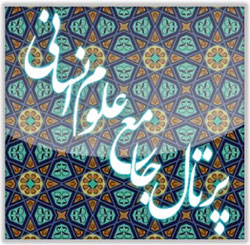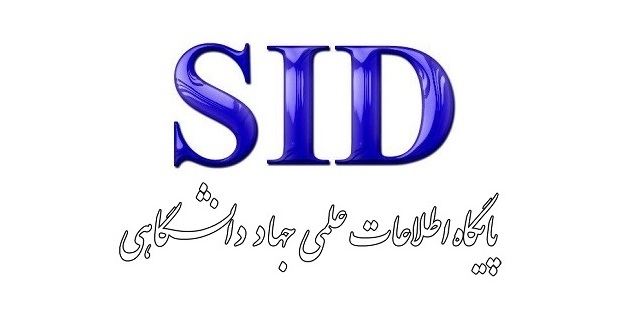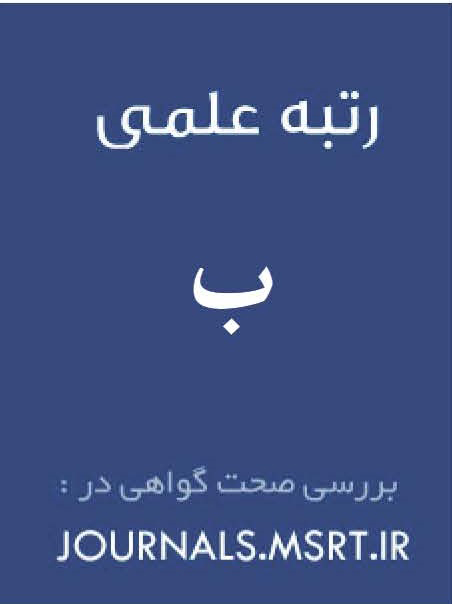Examination of Paradox Formation (Use of Paradox) in the Poetry of Afshin Yadollahi with the Introduction of Textual Paradox
Keywords:
Rhetoric, Paradox, Contradiction, Contemporary Poetry, Afshin YadollahiAbstract
One of the most captivating topics in the aesthetics of poetry is the concept of paradox. The poetry of Afshin Yadollahi, a contemporary poet and lyricist, provides one of the most suitable grounds for studying various types of paradox in modern poetry. Yadollahi’s poetry is so interwoven with apparent contradictions that it can be considered the primary characteristic of his poetic style. The use of this rhetorical technique not only does not hinder the flow of the text but also enhances its fluency and eloquence, adding to its richness. This study examines the poet’s works in terms of the quality and types of paradox formation. This research, aiming to investigate the various techniques of paradox formation and different forms of paradox, follows a descriptive-analytical approach. The study categorizes paradox formation in Yadollahi’s poetry into four main groups: "linguistic structure, literary structure, literary framework, and content structure." Additionally, it introduces textual paradox alongside verbal and semantic paradoxes. The results indicate that Yadollahi predominantly employs the linguistic structure of copular sentences rather than compound sentences. The construction of paradoxical genitive compounds also plays a significant role in the linguistic structure of his poetry. In terms of literary structure, he primarily utilizes the opposition between words for paradox formation. However, in the section on contrastive relationships, two notable types—synesthesia and dimensional contrast—are also significantly present in his poetry. Regarding content structure, with an emphasis on the dominance of paradoxical superiority based on opposition, he mainly employs verbal paradoxes. Among the various forms of verbal structure, "contradiction" and "resolution of contradictions" are more frequently used. In this section, textual paradoxes are also introduced, which, considering their structural diversity and frequency in Yadollahi’s poetry, establish him as one of the foremost paradox-creating poets in Persian poetry. In Yadollahi’s poetry, textual paradoxes are formed through the combination of multiple paradoxes and the continuous presence of paradoxical concepts throughout the entire poem. Therefore, this characteristic can be regarded as one of the distinctive and innovative stylistic features of his poetry. In the literary framework section, simile, metaphor, ambiguity, and polysemy are the most frequently used rhetorical devices. Overall, the paradoxes in Yadollahi’s poetry, despite their simplicity and reliance on contrast between tangible, common, and superficial words, possess the qualities of innovation, novelty, surprise, and depth. He conveys complex concepts rooted in ontology and self-awareness through simple and comprehensible paradoxes for the audience.
Downloads
References
1. Mirsadeghi M. Dictionary of poetic art. Tehran: Mahnaz; 1994.
2. Soroush A. The Expansion of the Art of Tibaq (Antithesis) or the Use of Contrast, Negation, and Asymmetry in Saadi's Poetry. Zekr-e Jamil-e Saadi. 1990;2.
3. Goli A, Bafekr Ajabshir S. Aesthetic Paradox Techniques. Literary Techniques. 2016;8(2):100-16.
4. Yadollahi A. The Words I Should Have Said and You Should Have Heard. Tehran: Negah; 2014.
5. Yadollahi A. A Closed Tavern Customer. Tehran: Sepid Collection; 2015.
6. Yadollahi A. Logical Madness. Tehran: Negah; 2020.
7. Yadollahi A. A Love Chronicle. Tehran: Negah; 2021.
8. Yadollahi A. Sleep Beside My Poems Tonight. Tehran: Negah; 2022.
9. Yadollahi A. Forget My Memories, My Dreams Remain. Tehran: Negah; 2022.
10. Fouladi A. The Language of Mysticism. Tehran: Sokhan/ Faragoft; 2010.
11. Hafez Shirazi SM. Divan Hafez. Tehran: Asatir; 2023.
Downloads
Published
Submitted
Revised
Accepted
Issue
Section
License
Copyright (c) 2025 Zahra Abolghasemi (Author); Maryam Shad-Mohammadi; Naeimeh Kialashaki, Vajihe Torkamani Barandoozi (Author)

This work is licensed under a Creative Commons Attribution-NonCommercial 4.0 International License.








